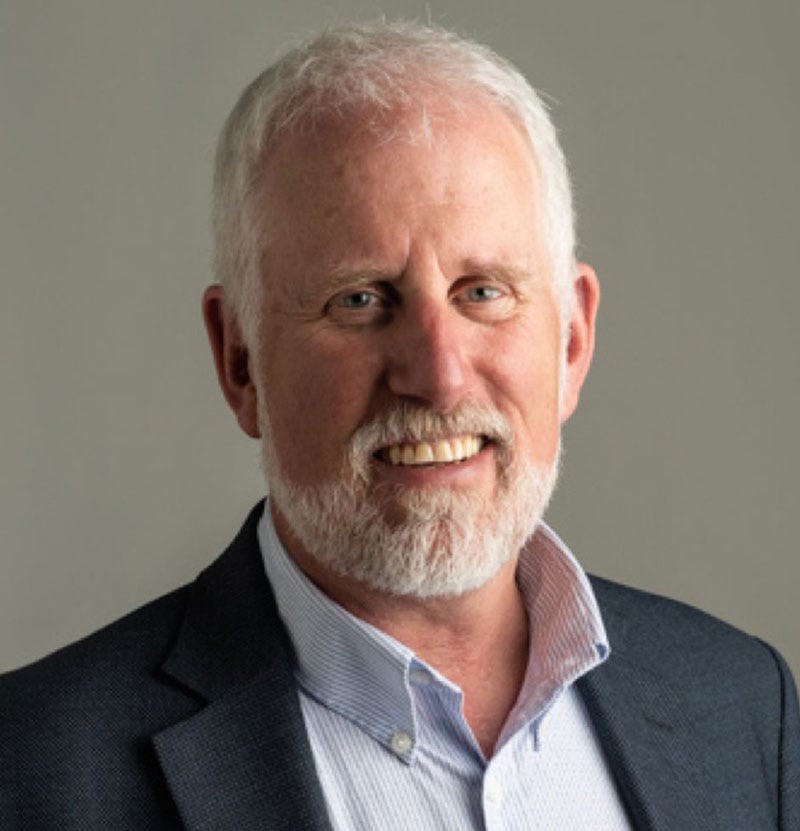Happy Friday folks, and welcome to another edition of Inside The Newsroom, where today we’ll have the latest in our series of candidates running for public office. This time it’s the turn of Mark Gamba, who’s vying to represent Oregon’s 5th district in the U.S. House of Representatives. Mark’s biggest test won’t be November’s general election, instead it’ll be Tuesday’s Democratic primary where he must topple 12-year incumbent Kurt Schrader, who’s one of the most senior Democrats in the country. We got into how the race has changed since going 100 percent digital amid the coronavirus lockdown, as well as how Mark’s 30-year career as a photojournalist exposed him to some of the worst effects of climate change, and how the emergency is fuelling the world’s wars and mass migration. Up top is the podcast, down below is the post-game, but first my picks of the week and today’s Job Corner. Enjoy! 🤓
Picks of the Week
How To Get Away With Murder — Goodbye to one of the most complex black women on TV 🥂
Buzzfeed, Quartz — Buzzfeed announced it’s shutting its UK and Australian newsrooms, and Quartz is laying off 80 people
MoMA — Explore 139,000 artworks displayed in the Museum of Modern Art with this spectacular interactive visualization
Job Corner
Lots of deadlines this weekend for more than 350 active journalism jobs, internships and freelance gigs. Companies include the Associated Press, Bloomberg, the Financial Times, Politico Europe and Telemundo. Spread the word far and wide!
Like Me, Please
Before you read on, please like this edition of Inside The Newsroom by clicking the ❤️ up top. That way I’ll appear in clever algorithms and more people will be able to read. Cheers.
Who is Mark Gamba?
Mark is a former photojournalist of 30 years who decided that journalism wasn’t enough, and turned to public service to make a bigger impact. He became mayor of Milwaukie, Oregon, a city of around 20,000 people in 2015, and won reelection in 2018. Having worked with the likes of National Geographic and Sports Illustrated, Mark’s work took him to all parts of the U.S. and rest of the world, exposing him to different cultures, languages and the harsh reality of climate change. It’s why he believes he’s the right person to represent Oregon’s 5th district in the U.S. House of Representatives in November. Mark’s biggest test will be to defeat incumbent Democrat Kurt Schrader, who was first elected in 2008, in Tuesday’s primary. Schrader won 87 percent of the Democratic vote in 2018, but Mark’s challenge is the most serious Schrader’s received in years, and his centrist position could land him in trouble amid the age of growing left-wing populism in the U.S.

History of Oregon Politics
Oregon is a blue stalwart on paper, having voted for a Democratic president in every election since 1988. But as we’ve discussed tirelessly in this newsletter, there are endless nuances under the hood/bonnet in each state, whether it be the weirdness of West Virginia’s state legislature, or the fact that Maine has voted for a Democratic president in every election since 1992, but hasn’t had a blue U.S. Senator since 1995. In Oregon, the intrigue stems from the fact that in 2016, voters turned out for the two main parties in their lowest percentage in 20 years, when third-party candidate Ross Perot won nine percent for his Reform Party, after he won 24 percent in 1992. This could mean that Oregonians are tired of the same old two-party system and are ready for new leadership, meaning the five sitting U.S. Representatives, who have a combined 97 years of service, could be in trouble come November.
Balancing Budgets
In Milwaukie, Mark and his team have done their best to offset the immediate and future financial losses his city’s workers and businesses will suffer due to the coronavirus. But Milwaukie just isn’t big enough to have the money saved in its coffers to deal with such a crisis. The same can be said of many states, who are beginning to struggle to foot the bill of unemployment claims due to the millions of layoffs and furloughs in recent months. A report by Tax Foundation shows that several states have enough money saved to survive several months, and Wyoming’s estimated to be able to cover its people for more than six years. Meanwhile the likes of California, Texas, Kentucky, Ohio, New York and Massachusetts can only afford to pay out unemployment benefits for up to seven weeks.
Credit: Tax Foundation

Unlike the federal government, states are legally required to balance theirs budgets, which is why the likes of New York, California, Connecticut, Hawaii, Illinois, West Virginia, Texas, Massachusetts and Ohio have filed for federal financial help. Additionally, the coronavirus shutdown could cost the U.S. economy half a trillion dollars, and that’s probably a conservative figure. It will likely be years before the U.S. economy recovers, if at all, and will likely take an unconventional shape economists are calling the Swoosh Recovery. States therefore face inevitable cuts on a mass scale to foot the bill.
What Can We Learn From the New Deal?
Amid the current financial chaos, many are calling for countries around the world to adopt a New Deal-style financial program to re-stimulate their economies and get people working again. The latest figures show that unemployment’s soaring around the world, and could rise to 25 percent in the U.S., according to Goldman Sachs. During the darkest days of the Great Depression in 1933, unemployment rocketed from 3 to 25 percent, forcing newly elected President Franklin D. Roosevelt to unleash a series of government-funded programs and projects not seen before. While the economy received the shot in the arm it so desperately needed and many credit FDR for shortening the duration of the Great Depression, the jury is out on what impact his actions really had, with the Dust Bowl lasting the majority of the decade.
In South Korea, a ‘Tech New Deal’ will fund 5G networks and AI development. In the UK, GDP fell 2 percent in the first three months of the year, and significant government spending is needed to jump start the economy after more than a decade of meagre growth. And some members of the European Parliament have called for an ambitious plan centered around new green jobs. Unlike the aforementioned countries and regions, the U.S. has a forthcoming general election, which could mean a stimulus package that will actually benefit the people might not be implemented for another year, deepening the woes of people across the country.
Migration and War are Fuelled by Climate Change
Mark’s travels exposed him to parts of the world that many of us will never experience, which is why he’s so knowledgable about the effects of climate change. More than a million people migrated from the Middle East and parts of Africa to Europe in 2015, sparking an influx of people not seen on such a scale since records began, overwhelming many countries in the process. In 2018, a so-called “Migrant Caravan” of more than 7,000 Central Americans arrived at the U.S.-Mexico border after months of travelling up from the likes of Honduras, Guatemala, and El Salvador. Many migrants flee their home countries because of persecution, poverty and violence, but what’s often lost is that it is climate change that’s fuelling the majority of the problems such countries are facing.
Credit: United Nations

There are currently around 71 million displaced people around the world, a figure the UN forecasts could be anywhere between 24 million and 1 billion by 2050. Imagine that, around one tenth of the world’s population could be a forced migrant because climate change has made parts of this planet completely inhabitable. Unfortunately we’re living in a vicious feedback loop, whereby the worse climate change becomes, the more wars it’ll spark, driving more migration until the cycle repeats itself. As climate change ramps up its next attack on the planet, we can only expect more deadly wars and migrants dying as a consequence.
Related podcasts…
#73 — Nick Rubando (U.S. House Candidate) on running for the office for the first time and why Midwestern politics is so weird
#68 — Mckayla Wilkes (U.S. House) on taking on No. 2 House Democrat Steny Hoyer and why the U.S. needs Universal Basic Income
#64 — Paula Jean Swearengin (U.S. Senate) on West Virginia’s devastating opioid crisis, and what it’s like running for the U.S. Senate
This week…
#77 — Francesco Marconi (Newlab) on artificial intelligence and its role in the future of journalism
… Last week…
#76 — Betsy Sweet (U.S. Senate Candidate) from Maine on her race with Susan Collins, and a look at the history of campaign finance laws in the U.S.
#75 — Alex Schiffer (The Athletic) on the grind of making the jump from local to national journalism
Thanks for making it all the way to the bottom. Please like and share this edition of Inside The Newsroom by clicking the ❤️ below. That way I’ll appear in clever algorithms and more people will be able to read.
If you haven’t already, please consider subscribing to get a newsletter about a cool news topic in your inbox every time I publish (1-2 times a week). You can find me on Twitter at @DanielLevitt32 and email me corrections/feedback or even a guest you’d like me to get on the podcast at daniellevitt32@gmail.com.














Share this post